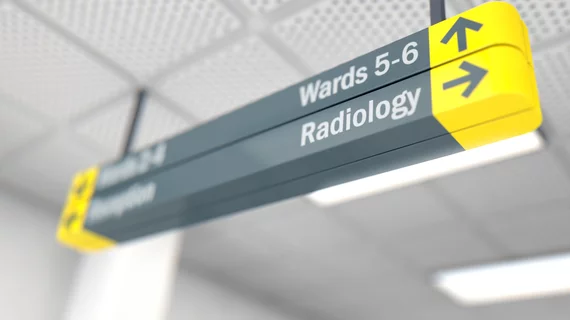Consolidation has resulted in larger, but fewer radiology groups
Over the past few years the U.S. radiology workforce has undergone consolidation, resulting in larger practice sizes and less single-specialty radiology practices, reported authors of an April 2 study published in the Journal of the American College of Radiology.
“Marketplace consolidation has implications for how radiologists partner with referring physicians as well as for how radiologists are engaged and add value within their health systems,” wrote Andrew Rosenkrantz, MD, of NYU Langone Medical Center in New York City, and colleagues.
Despite an understanding of healthcare’s general shift toward larger practices, in radiology, the topic has received little attention, the authors wrote. Increasing pressure from the government and private payers to improve quality, reduce costs and close care gaps are partially driving such changes. The researchers also hypothesized that high IT and infrastructure costs may be behind consolidation.
To assess this trend, Rosenkrantz et al. looked at data spanning 2014 to 2018 taken from the Medicare Physician Compare database. Radiologists were classified by their largest identifiable practice affiliations, and single-specialty practices were identified by practice name.
In terms of individual radiologists, from 2014 to 2018 the researchers discovered the following:
- Groups with one or two members fell from 3.2% to 2.1%.
- Those with three to nine members dropped from 10.2% to 6.7%.
- Ten to 24 member groups dropped from 18.2% to 14.1%.
- Twenty-five to 49 member groups declined from 16.6% to 15.1%.
- Groups with 50 to 99 members fell from 13.3% to 11.5%.
- One-hundred to 499 member groups increased from 15.7% to 21.8%.
- Groups with more than 500 members jumped from 22.9% to 28.7%.
At the practice level, Rosenkrantz and colleagues noticed the following:
- The percentage of all radiologists’ practices with one or two members fell from 26.9% to 22.8%.
- The percentage of all practices with 100 to 499 members increased from 7.6% to 10.2%.
- The percentage of all practices with 500 members or more jumped from 2.5% in to 4.1%.
For the researchers, the results raised a number of questions, including whether or not consolidation improves quality, cost, access or even patient outcomes. More research is required to answer such questions, they noted.
Rosenkrantz and colleagues did maintain that consolidation is something healthcare stakeholders must continually keep an eye on.
“Numerous stakeholders, including national specialty leadership, must maintain awareness of this phenomenon given its potential far-reaching implications on practice and care delivery within the profession,” the authors concluded.
“Organized medicine, including national radiology specialty societies, will need to evaluate this trend and impact on society membership. Furthermore, how these organizations will adapt their offerings, mission, and even leadership are relevant considerations.”

